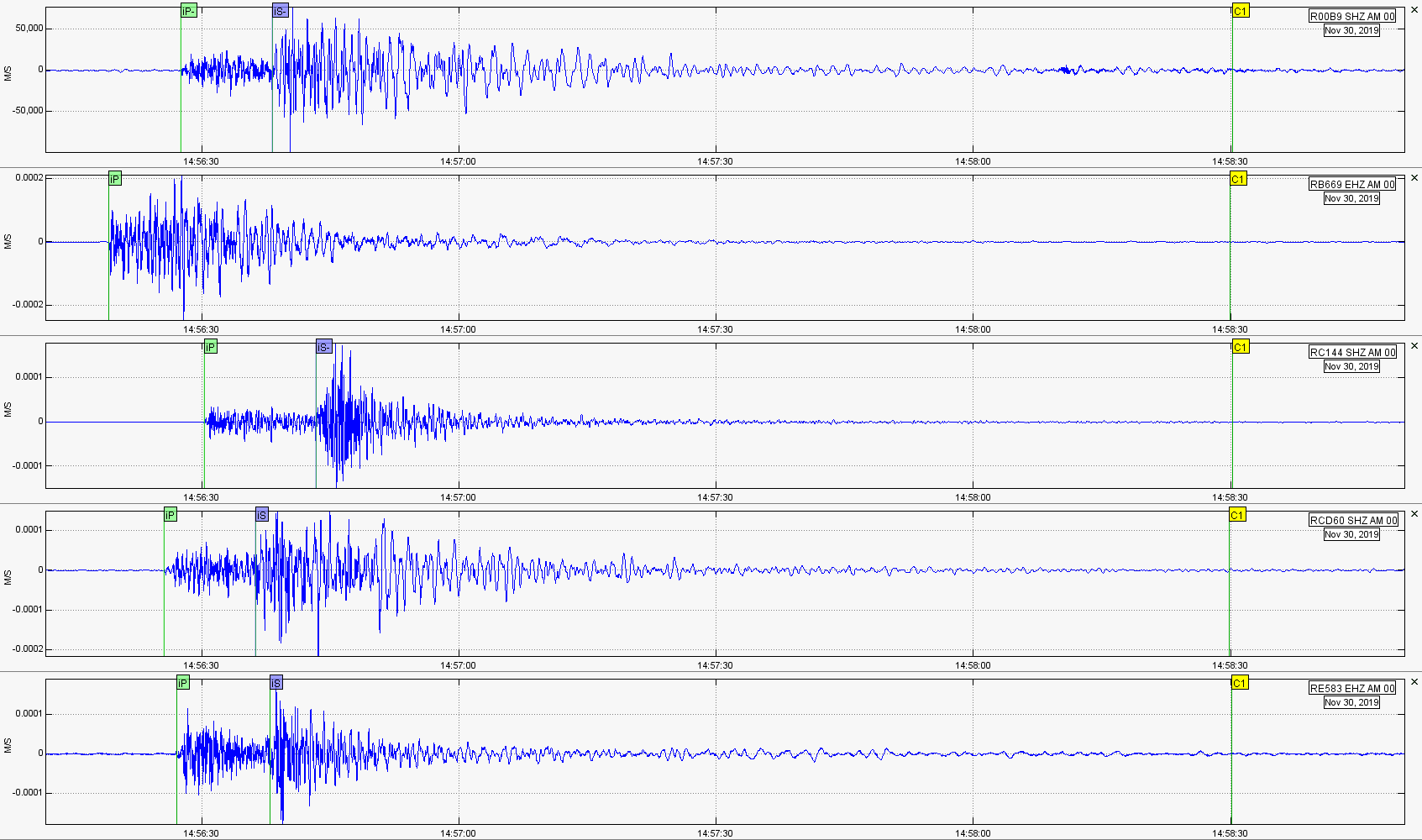Angel
You’re right, the position of the coda makes a big difference to the magnitude. I guess one needs a bit of experience to get that right.
For me, the choice of the time for C1 is much more difficult to detect than either iP or iS.
The human eye is a very precise instrument in detecting changes such as the arrival of the P waves, but not so good at figuring out when the pattern returns to ambient.
Taking the coda to extremes, the magnitude increases to 3.04 (note there are 5 stations in this one):
